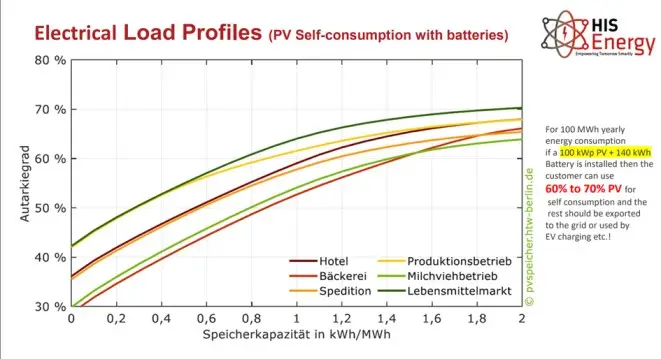Jump Ahead
The 7000-Hours Rule and Its Impact on Energy Management
The 7000-hours rule stands out in energy management as a strategy that offers companies with high year-round energy consumption the chance to achieve up to a 90% reduction in grid demand charges. This benefit applies to businesses capable of evening out their energy consumption peaks, thus maintaining a nearly constant demand on the power grid across 7000 hours annually. Such significant discounts on network charges are designed to enhance the power grid’s efficiency and stability by encouraging a balanced load with minimal extreme fluctuations. This underscores the role of energy storage systems as a pivotal resource for managing energy loads effectively
Benefits of Energy Storage and Peak Shaving for SMEs
While the 7000-hours rule offers particular advantages to large industrial companies with extensive production processes and consistent high energy demand, a different scenario unfolds for the majority of businesses. Many companies, especially smaller and medium-sized enterprises, do not meet this 7000-hour threshold due to their specific operating times and cycles. Instead, they often find themselves operating within a range of under 2500 hours or slightly above, necessitating alternative strategies to optimize their energy costs and enhance their support for grid stability.
For these businesses, the intelligent utilization of technologies like energy storage systems and methods such as peak shaving presents significant opportunities to boost their energy efficiency. Additionally, they can capitalize on financial incentives by contributing to improved grid stability. Furthermore, they can integrate peak shaving with additional applications, such as optimizing PV self-consumption and taking advantage of Time of Use tariffs, to reduce their energy costs significantly. Although they might not directly benefit from the 7000-hours rule’s discounts, they can still achieve considerable savings on energy costs and optimize their operations through customized energy management and storage solutions.
Optimization Potential for Companies with Less Than 2500 Operating Hours
Companies with fewer than 2500 operating hours often confront the challenge of optimizing their energy costs. Here, the strategic application of peak shaving through battery storage systems offers an effective solution. This technique allows for storing energy during low-demand periods and utilizing it during peak times, smoothing out load profiles. Not only does this enhance grid usage efficiency, but it also improves grid supportiveness, ultimately leading to lower demand charges.
Opportunities for Businesses with More Than 2500 Operating Hours
Businesses operating more than 2500 hours annually discover further optimization potential through peak shaving. Battery storage systems offer the capability to significantly reduce demand charges by eliminating 15-minute energy peaks. They enhance consumption efficiency by charging the batteries during periods of low prices and discharging during high-cost intervals, thereby optimizing energy expenditure. Additionally, these systems contribute to increasing sustainability by boosting PV self-consumption, aligning energy usage with environmentally friendly practices.
The Role of Intelligent Energy Management
A single 15-minute unattended power peak can erase the benefits of peak shaving accumulated throughout the year. Effective peak shaving depends on the intelligent energy management of modern energy storage systems. These systems provide precise control over energy flows, preparing the batteries for peak shaving by adjusting the batteries’ State of Charge (SOC) using load forecast algorithms and smart approaches. This meticulous preparation allows companies to capitalize on lower electricity prices and enhance their energy efficiency, ensuring that the advantages of peak shaving are fully realized without being compromised by unexpected power spikes.

Furthermore, the technology behind battery storage systems allows for flexible adjustment to a company’s individual energy needs. This flexibility is particularly relevant for businesses subject to seasonal fluctuations or whose energy consumption is dictated by production cycles. The ability to store and use energy precisely when it’s most cost-effective represents a significant competitive advantage
In summary, the deployment of energy storage systems provides companies of all sizes with significant opportunities to optimize their energy costs. Implementing strategies such as peak shaving and peak shifting can lead to substantial reductions in electricity costs, while also contributing valuably to the stabilization of the power grid.
Summary and Outlook
Investing in energy storage systems, including battery storage, is a wise decision for companies aiming to enhance their energy efficiency and reduce operating costs. This advanced technology enables control over energy costs and paves the way for a more sustainable and cost-efficient future.



